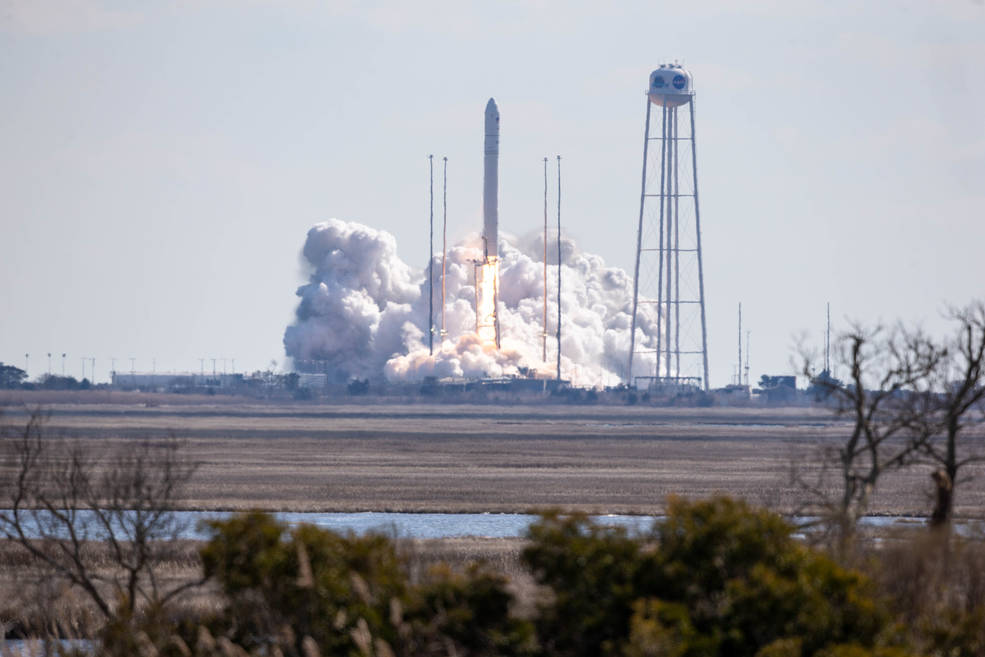
For SpaceUpClose.com & RocketSTEM
CAPE CANAVERAL, FL –The 15th Northrop Grumman Cygnus cargo resupply spacecraft successfully launched at 12:36 p.m. EST Saturday, Feb. 20 from NASA’s Wallops Flight Facility on the eastern shore of Virginia bound for the International Space Station with some 4 tons of science investigations and cargo for 7 person multinational crew living and working onboard – and on a date that coincides with the 59th anniversary of John Glenn’s historic Mercury flight as the first U.S. astronaut to orbit Earth.
The Cygnus NG-15 spacecraft separated from the upper stage about nine minutes after liftoff on the Antares 230+ rocket from the Mid-Atlantic Regional Spaceport’s Pad 0A at NASA Wallops.
The ship healthy and deployed its solar arrays about 3 hours post launch to collect sunlight to power resupply ship on its nearly 2 day journey to the space station.
The 8000 pounds of cargo is composed of about 1/3 science, 1/3 ISS hardware and 1/3 crew supplies and consumables.
The @NorthropGrumman #Cygnus resupply ship, carrying 8,000 pounds of cargo, is racing to the station for a robotic capture on Monday at 4:40am ET. @NASA TV will broadcast its arrival live starting at 3am. More… https://t.co/TNk75WS7mk pic.twitter.com/6Za1K6UBE7
— International Space Station (@Space_Station) February 21, 2021
The launch was carried live on NASA Television, the NASA app, and agency’s website.
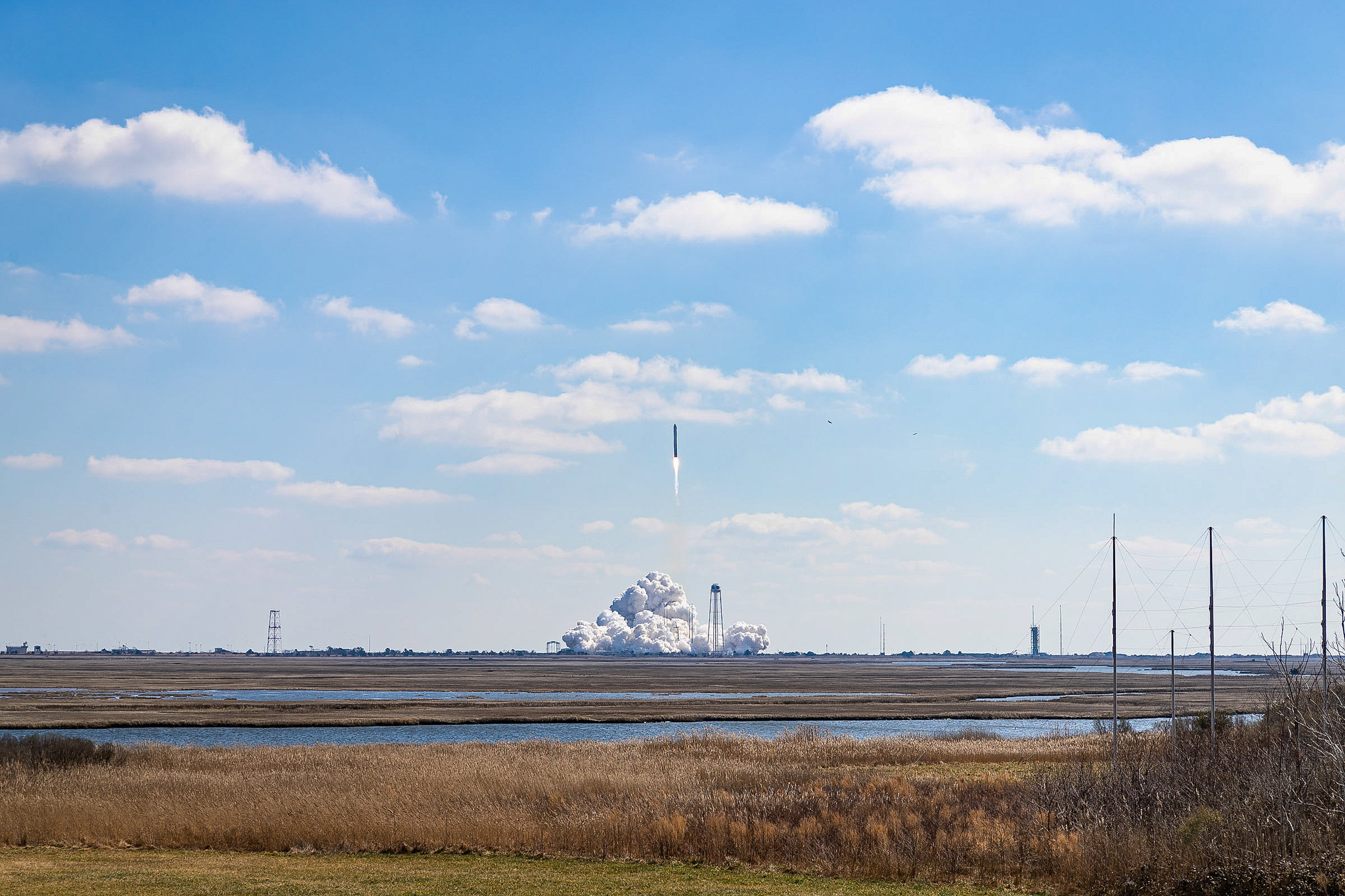
Cygnus will arrive in the vicinity of the ISS early Monday morning for rendezvous, robotic arm capture and berthing at the Unity module
NASA TV will again provide live coverage of approach and arrival beginning at 3 a.m. ET Monday, Feb. 22. Cygnus is scheduled to arrive at the space station around 4:40 a.m. ET.
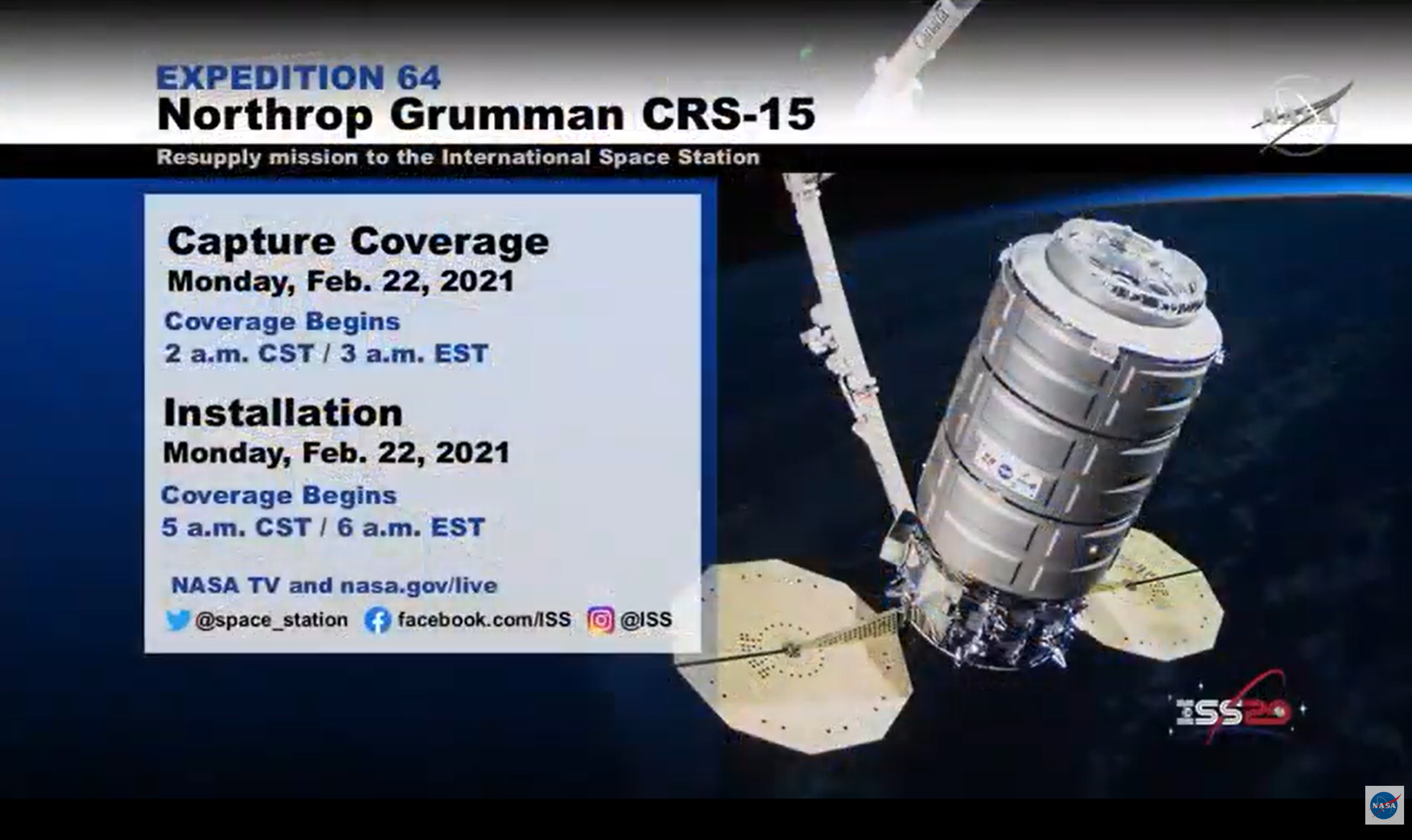
Expedition 64 crewmembers Japan Aerospace Exploration Agency (JAXA) astronaut Soichi Noguchi will use the space station’s robotic Canadarm2 to capture Cygnus upon its arrival, while NASA astronaut Michael Hopkins monitors telemetry during rendezvous, capture, and installation on the Unity module’s Earth-facing port.
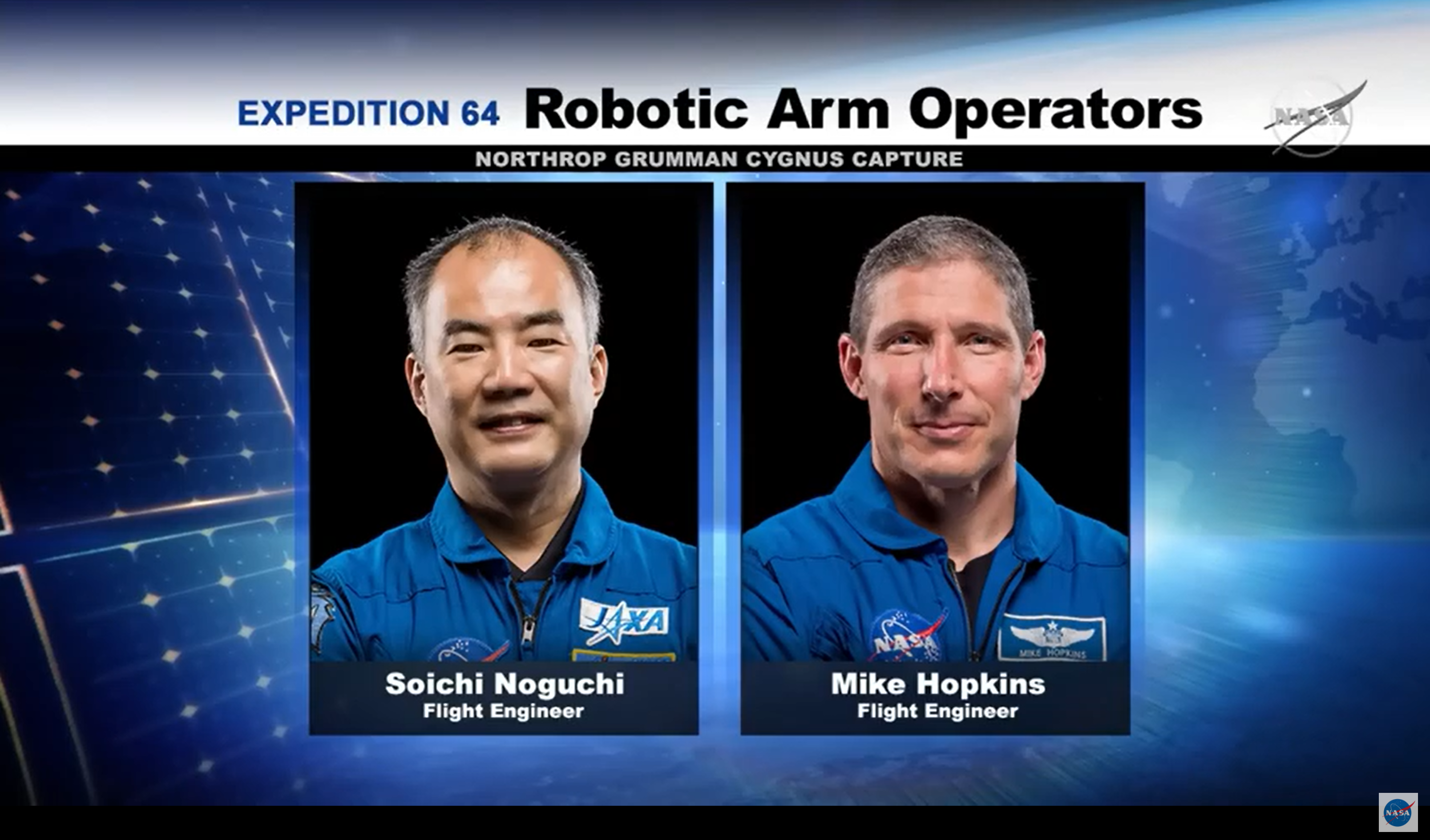
Northrop Grumman’s 15th cargo flight to the space station is the fourth under its Commercial Resupply Services 2 (CRS-2) contract with NASA.
Watch this NASA tweeted launch video:
The @NorthropGrumman #Cygnus cargo craft launched atop the #Antares rocket on time from @NASA_Wallops in Virginia today. It will reach the station on Monday for capture at 4:40am ET. More… https://t.co/idSpWVVsVA pic.twitter.com/2kGkS2J6hw
— International Space Station (@Space_Station) February 20, 2021
Cygnus was named the S.S. Katherine Johnson in honor of Katherine Johnson a black woman working for NASA on John Glenn’s and much more.
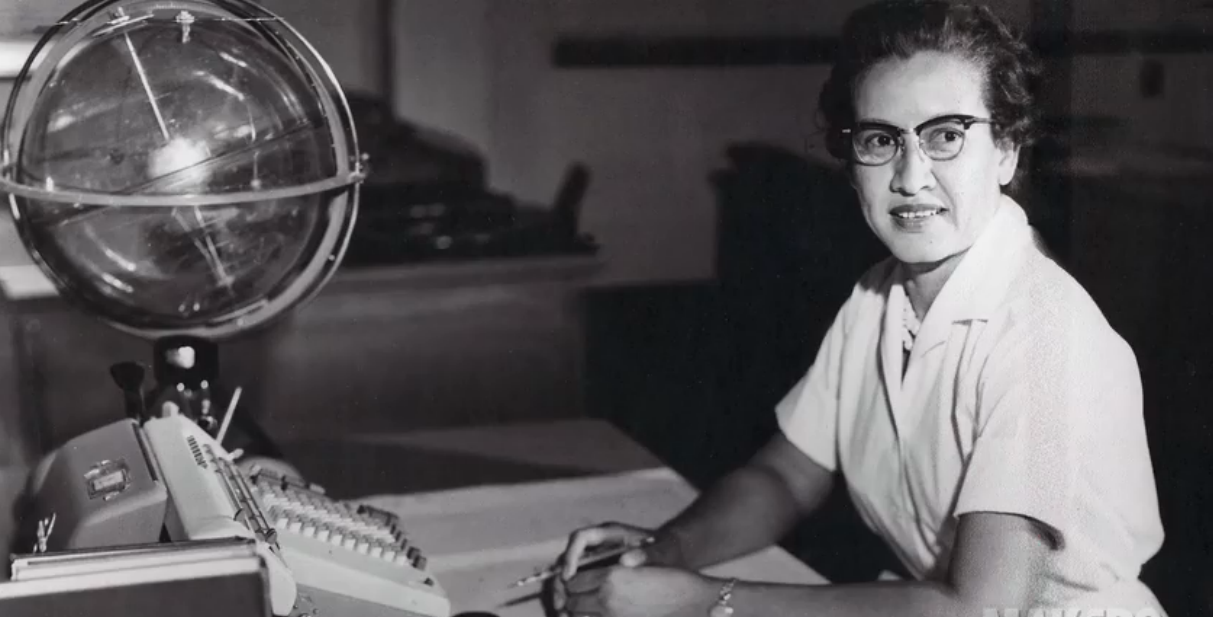
The inspiring story of Katherine Johnson was highlighted in the hit movie ‘Hidden Figures.’
“As a Black woman, Katherine Johnson shattered race and gender barriers to live out her dreams and become a pivotal part of this country’s young space program,” said the lead NASA flight director for the mission Adi Boulos.
“I am humbled to be the International Space Station Flight Director for the Northrup Grumman CRS-15 mission,” Boulos said. “This spacecraft has the honor of being named the S.S. Katherine Johnson.
“Fifty-nine years ago today, astronaut John Glenn became the first American to orbit Earth after personally asking for Katherine Johnson to verify his Mercury missions’ orbital trajectory calculations. Katherine Johnson was an asset to our space program, and I am honored to work for a mission that expands her legacy even further.”
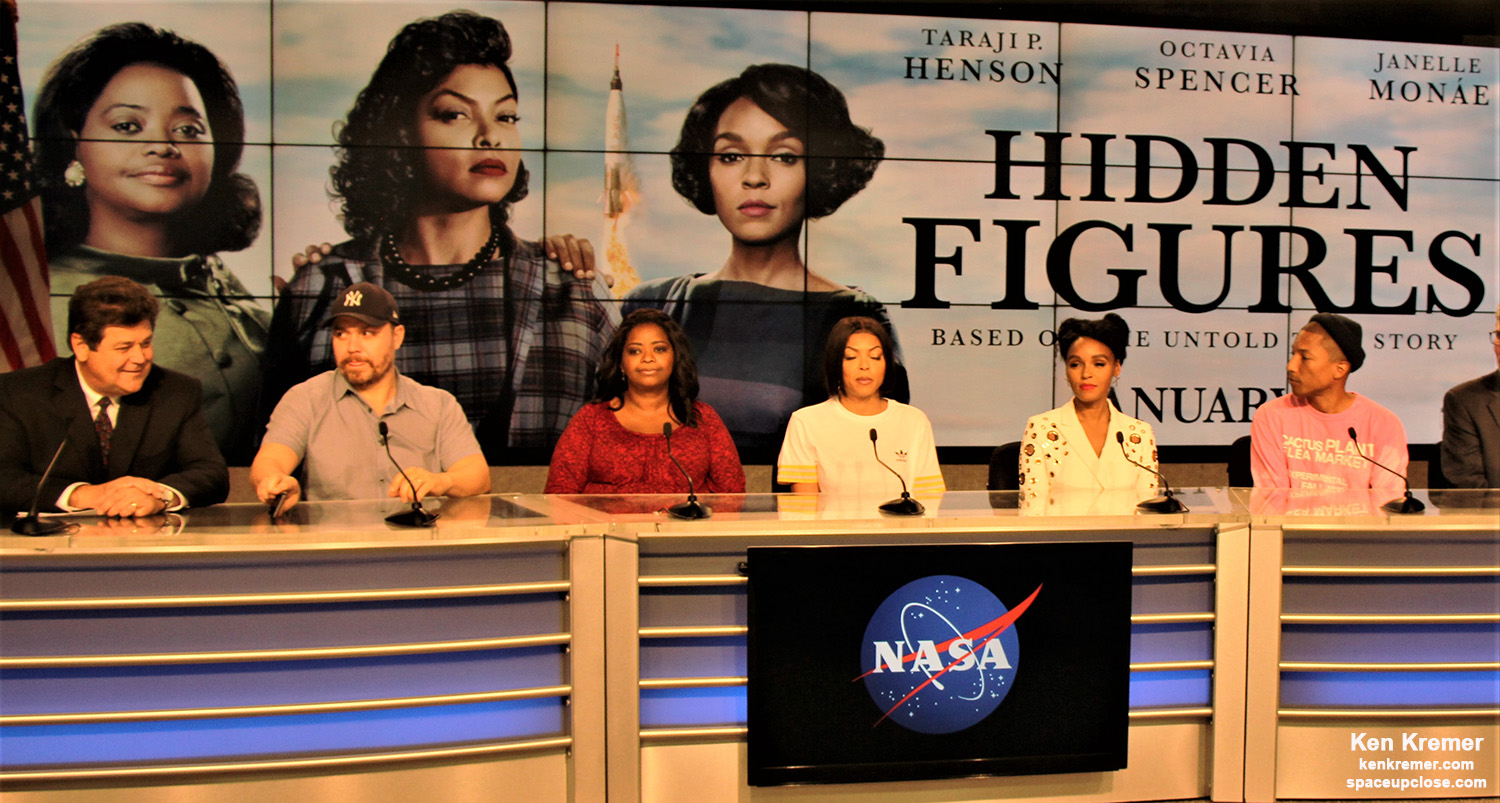
The resupply flight will support dozens of new and existing investigations.
.@NorthropGrumman's #Cygnus resupply ship's solar arrays deployed in space today about three hours after launching from @NASA_Wallops. It is headed for a station capture Monday at 4:40am ET. More… https://t.co/hYkkjMwVZl pic.twitter.com/7OmcViwjqT
— International Space Station (@Space_Station) February 20, 2021
Here is the cargo manifest on the NG-15 mission:
- Vehicle Hardware: 3,115 pounds (1,413 kilograms)
- Science Investigations: 2,484 pounds (1,127 kilograms)
- Crew Supplies: 2,054 pounds (932 kilograms)
- Unpressurized Cargo: 176 pounds (67 kilograms)
- Spacewalk Equipment: 52 pounds (24 kilograms)
- Russian Hardware: 52 pounds (24 kilograms)
- Computer Resources: 2 pounds (1 kilogram)
Here’s NASA”s description of the scientific investigations Cygnus is delivering to the space station:
Using worms to learn about muscle loss
Tiny worms could help us determine the cause of muscle weakening that astronauts can experience in microgravity. Thanks to a new device for measuring the muscle strength of tiny C. elegans worms, researchers with the Micro-16 study can test whether decreased expression of muscle proteins is associated with this decreased strength. Results of this experiment may provide a better understanding of the links between gene expression and muscle strength, support the development of countermeasures to help maintain crew member health, and support new therapies to combat the effects of age-related muscle loss on Earth.
I dream of space
The ESA (European Space Agency) Dreams experiment will take a closer look at astronaut sleep. The investigation serves as a technology demonstration of the Dry-EEG Headband in microgravity, while also monitoring astronaut sleep quality during a long-duration flight mission. Raw data will be available to scientists for their analysis, while the crew also can input direct feedback on their sleep with a tablet application. Sleep is central to human health, so a better understanding of sleep in space provides a more comprehensive understanding of human health in microgravity.
A life support upgrade
The Environmental Control and Life Support System (ECLSS) is a system of regenerative life support hardware that provides clean air and water to the space station crew. The system will get an upgrade thanks to the Exploration ECLSS: Brine Processor System. This investigation demonstrates technology to recover additional water from the Urine Processor Assembly using a membrane distillation process. Long-duration crewed exploration missions require about 98% water recovery, and this technology demonstration in brine processing will help achieve this goal. This Brine Processor System plans to close the gap for the urine waste stream of the space station.
Testing the manufacturing of artificial retinas in microgravity
Millions of people on Earth suffer from retinal degenerative diseases. Artificial retinas or retinal implants may provide a way to restore meaningful vision for those affected. In 2018, startup LambdaVision sent its first experiment to the space station to determine if the process used to create artificial retinal implants by forming a thin film one layer at a time may work better in microgravity. LambdaVision’s second experiment evaluates a manufacturing system using a light-activated protein that replaces the function of damaged cells in the eye. This information could help LambdaVision uncover whether microgravity could optimize production of these retinas and assist people back on Earth.
Preparing for the Moon
The International Space Station serves as a testing ground for technologies we plan to use on future missions to the Moon. The A-HoSS investigation puts tools for the crewed Artemis II mission to the test. Built as the primary radiation detection system for the Orion spacecraft, the Hybrid Electronic Radiation Assessor (HERA) was modified for operation on the space station. By verifying that HERA can operate without error for 30 days, it validates the system for crewed Artemis mission operations.
High-performance computing aboard the space station
Improved high-performance computing will be required for space missions as humans prepare for additional exploration throughout the solar system. Currently, computing capabilities in space are reduced compared to capabilities on the ground because they prioritize reliability over performance, creating challenges when transmitting data to and from space. Launched in 2017, the Spaceborne computer study ran a high-performance commercial off-the-shelf computer system in space, successfully performing more than 1 trillion calculations (or one teraflop) per second for 207 days without requiring reset. Now launching on Northrop Grumman’s CRS-15 mission, Spaceborne Computer-2 explores how commercial off-the-shelf computer systems can advance space exploration by reliably processing data significantly faster in space, speeding scientists’ time to data access and analysis from months to minutes.
These are just a subset of the hundreds of investigations currently being conducted aboard the orbiting laboratory in the areas of biology and biotechnology, physical sciences, and Earth and space science. Advances in these areas will help keep astronauts healthy during long-duration space travel and demonstrate technologies for future human and robotic exploration missions as part of NASA’s Moon and Mars exploration approach, including lunar missions through NASA’s Artemis program.
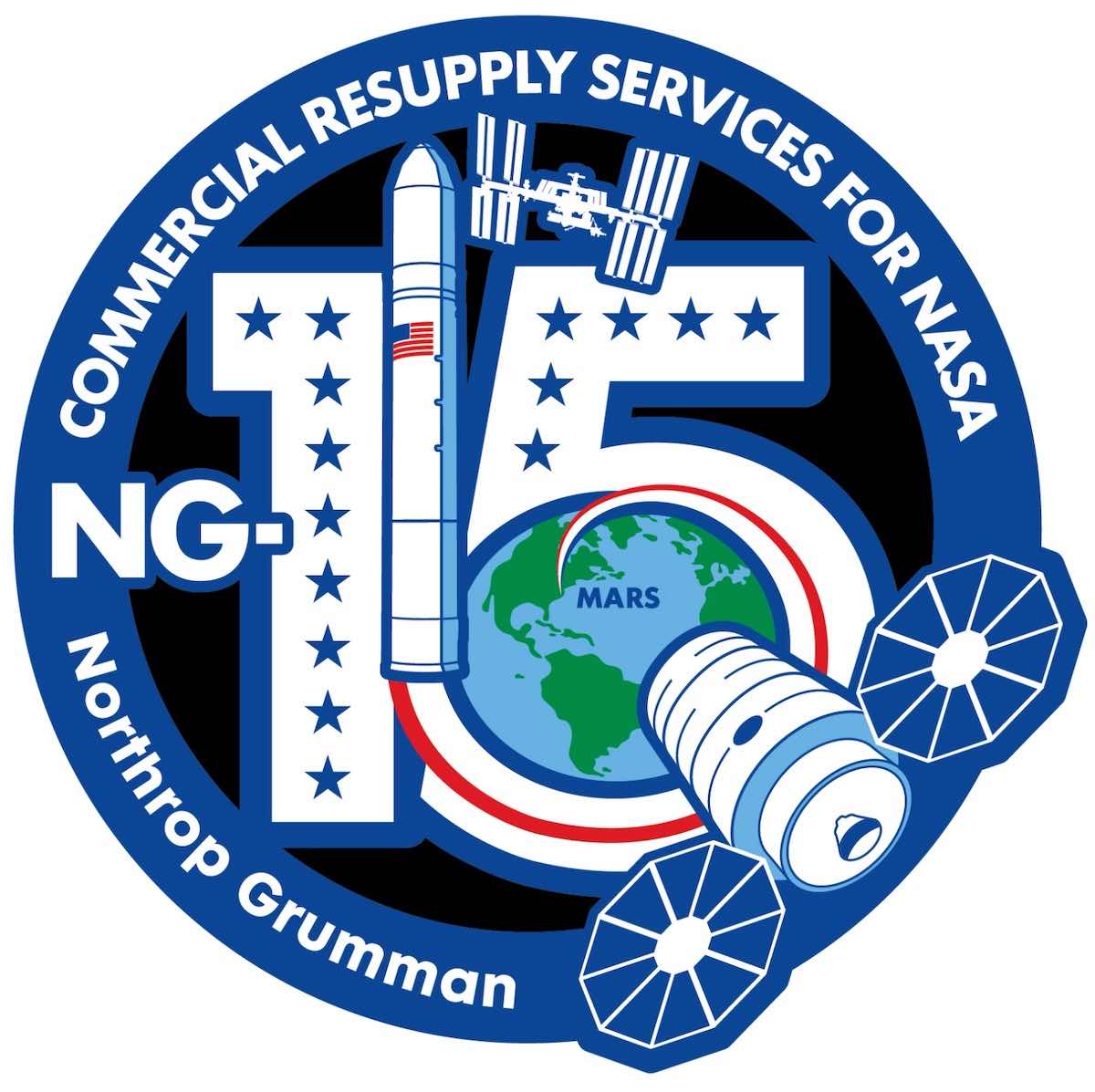
The prior Cygnus NG-14 departed the ISS on Jan. 6, 2021
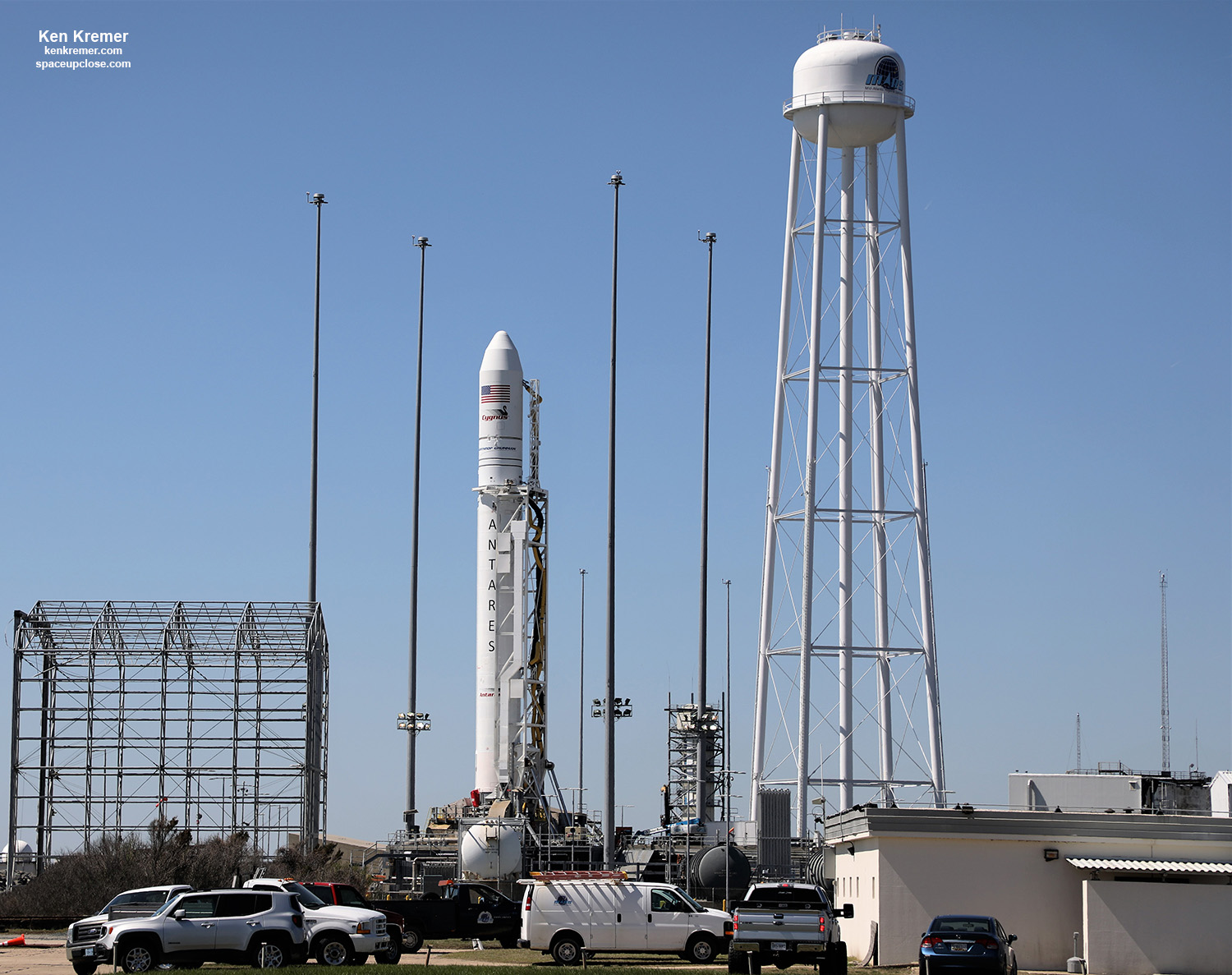
Watch Ken’s continuing reports about Antares and Cygnus, Mars 2020 Perseverance and Curiosity rovers, Artemis and NASA missions, SpaceX, Starlink, Commercial Crew and Starliner and Crew Dragon and onsite for live reporting of upcoming and recent SpaceX and ULA launches including Crew 1 & 2, Demo-2, ISS, X-37B, Solar Orbiter, NRO spysats and national security missions and more at the Kennedy Space Center and Cape Canaveral Space Force Station.
Stay tuned here for Ken’s continuing Earth and Planetary science and human spaceflight news: www.kenkremer.com –www.spaceupclose.com – twitter @ken_kremer – email: ken at kenkremer.com
Dr. Kremer is a research scientist and journalist based in the KSC area, active in outreach and interviewed regularly on TV and radio about space topics.
………….
Ken’s photos are for sale and he is available for lectures and outreach events
Ken has created hundreds of widely published Mars rover mosaics and lectures also about NASA’s Mars rovers
Please consider supporting Ken’s work by donating at Patreon:
https://www.patreon.com/kenkremer
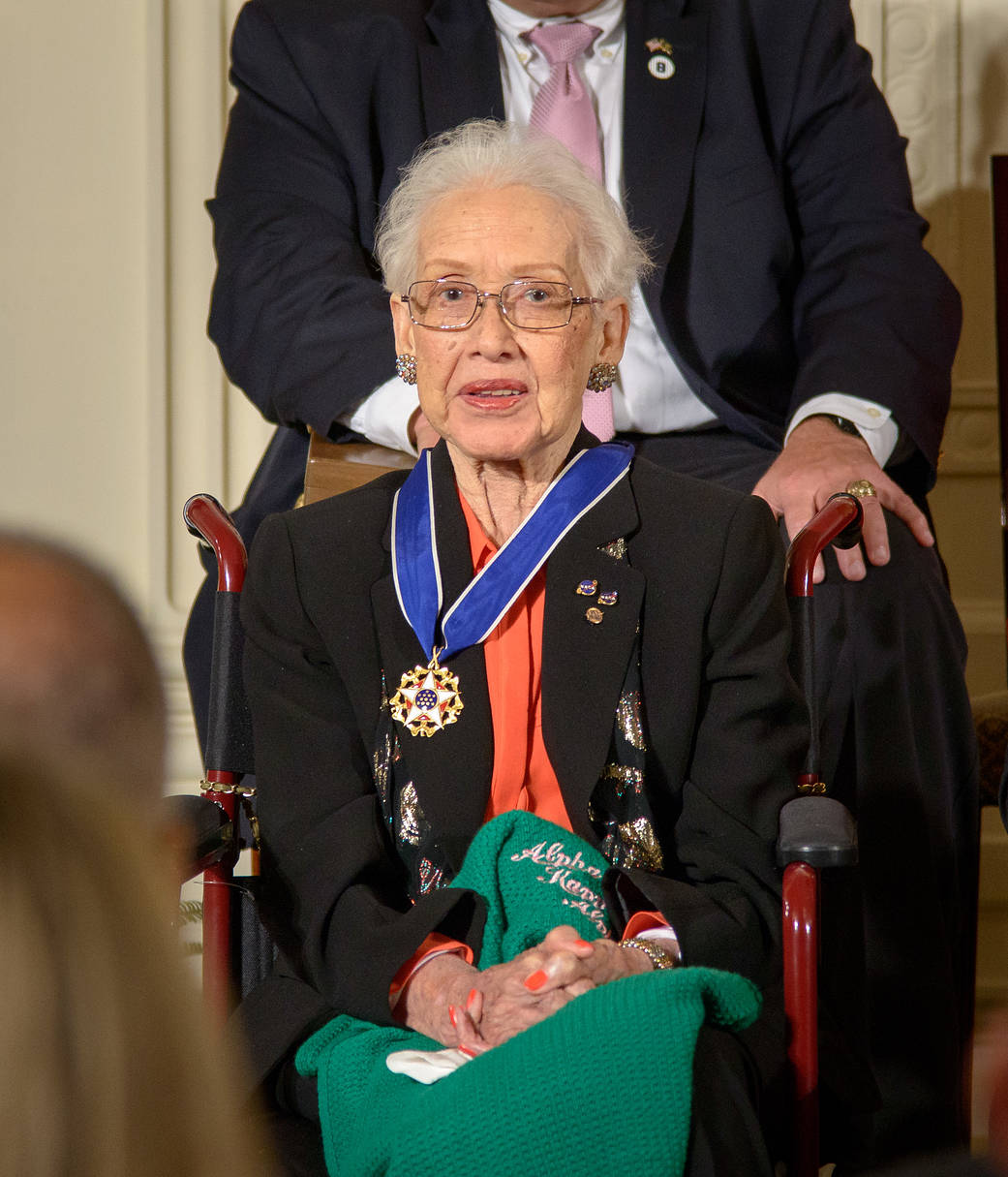
Johnson’s computations have influenced every major space program from Mercury through the Shuttle program. Johnson was hired as a research mathematician at the Langley Research Center with the National Advisory Committee for Aeronautics (NACA), the agency that preceded NASA, after they opened hiring to African-Americans and women. Johnson exhibited exceptional technical leadership and is known especially for her calculations of the 1961 trajectory for Alan Shepard’s flight (first American in space), the 1962 verification of the first flight calculation made by an electronic computer for John Glenn’s orbit (first American to orbit the earth), and the 1969 Apollo 11 trajectory to the moon. In her later NASA career, Johnson worked on the Space Shuttle program and the Earth Resources Satellite and encouraged students to pursue careers in science and technology fields.
x



